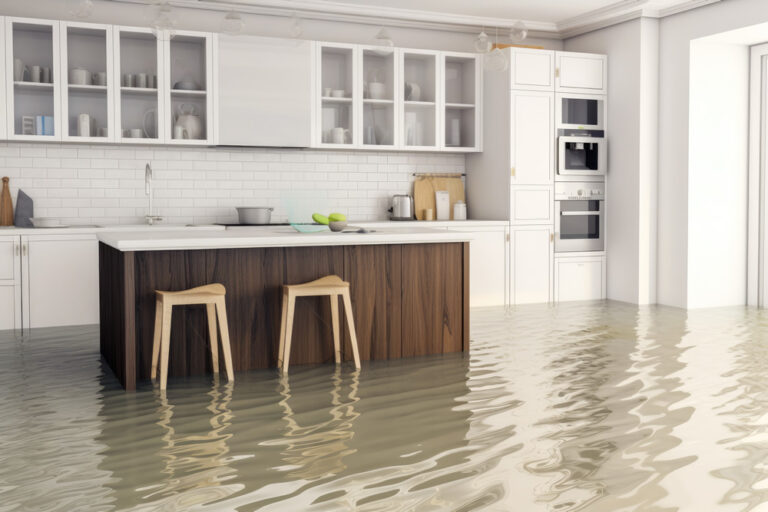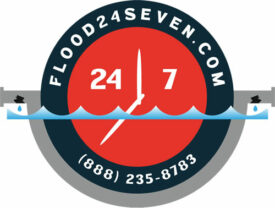
What are the Different Types of Water Damage?
Water damage can have devastating effects on homes and properties. Understanding the different types of water damage is crucial for homeowners and property managers to effectively respond to and mitigate these issues. This article will explore various types of flooding damages, different types of floods, and their effects on homes. Let’s dive in and explore this topic in detail.
Introduction to Water Damage
Water damage refers to the destruction caused by the intrusion of water into structures, leading to various problems and structural issues. It can occur due to natural disasters such as floods, storms, hurricanes, or plumbing failures like pipe bursts and leaks. Water damage can affect different areas of a property, including the foundation, walls, floors, ceilings, and belongings.
Types of Flooding Damages
Floodwaters from External Sources
Floodwaters from external sources are one of the most common causes of water damage. This type of flooding occurs when rivers, lakes, or oceans overflow, leading to water intrusion into homes. It can result in significant structural damage and pose health risks due to contaminants present in the water.
Plumbing Failures
Plumbing failures, such as pipe bursts, faulty appliances, or leaking fixtures, can cause water damage within a property. Sudden bursts or slow leaks can lead to extensive damage to walls, floors, and belongings. It is crucial to address plumbing issues promptly to prevent further damage.
Roof Leaks
Roof leaks can occur due to damaged shingles, improper installation, or severe weather conditions. When water infiltrates through the roof, it can seep into the attic, ceilings, and walls, causing water damage and potential mold growth.
Basement Flooding
Basement flooding is a common problem faced by homeowners, especially those living in flood-prone areas or properties with inadequate drainage systems. Heavy rainfall, groundwater seepage, or sewer backups can lead to significant water damage in basements, affecting the foundation and structural integrity.
Different Types of Floods
Flash Floods
Flash floods are rapid-onset floods that occur within a short period, usually within six hours of heavy rainfall or other triggering events. They can cause extensive damage due to the sudden rush of water, washing away structures and endangering lives.
Riverine Floods
Riverine floods occur when rivers and streams overflow their banks, often due to prolonged and heavy rainfall. These floods can affect large areas, submerging homes, damaging infrastructure, and displacing communities residing near the water bodies.
Coastal Floods
Coastal floods occur in coastal areas due to storm surges, high tides, or hurricanes. The combination of strong winds and high water levels can result in widespread flooding, damaging coastal properties and posing risks to inhabitants.
Urban Flooding
Urban flooding is caused by inadequate drainage systems in urban areas, where impervious surfaces prevent water from being absorbed into the ground. Heavy rainfall overwhelms the drainage infrastructure, leading to water accumulation on streets, in basements, and in low-lying areas.
Effects of Water Damage on Homes
Water damage can have severe consequences for homes and properties. Some of the common effects include:
- Structural damage to foundations, walls, and floors.
- Weakening of the building’s structural integrity.
- Mold and mildew growth, leading to health hazards.
- Damage to electrical systems, posing fire hazards.
- Deterioration of furniture, carpets, and personal belongings.
- Disruption of daily activities and inconvenience to occupants.
- Decreased property value and potential insurance complications.
- Increased risk of pest infestations due to moisture.
How to Mitigate Water Damage
When faced with water damage, it is essential to take immediate action to mitigate the situation. Here are some steps you can take:
- Ensure personal safety by turning off electrical power and avoiding contact with standing water.
- Contact a professional water damage restoration company to assess the extent of the damage and provide remediation services.
- Remove standing water using pumps, wet vacuums, or buckets.
- Thoroughly dry affected areas using dehumidifiers, fans, and proper ventilation.
- Salvage and clean belongings that can be restored, while disposing of irreparably damaged items.
- Address plumbing issues, repair roof leaks, and improve drainage systems to prevent future water damage.
- Consider installing sump pumps and backflow preventers as preventive measures.
- Regularly inspect and maintain gutters, downspouts, and waterproofing systems.
By taking prompt action and implementing preventive measures, you can minimize the impact of water damage and protect your home.
Water damage can significantly threaten homes and properties, causing structural damage, health risks, and financial burdens. Understanding the different types of flooding damages and floods is crucial for homeowners and property managers. By recognizing the signs, implementing preventive measures, and taking immediate action, you can mitigate the effects of water damage and protect your property.
